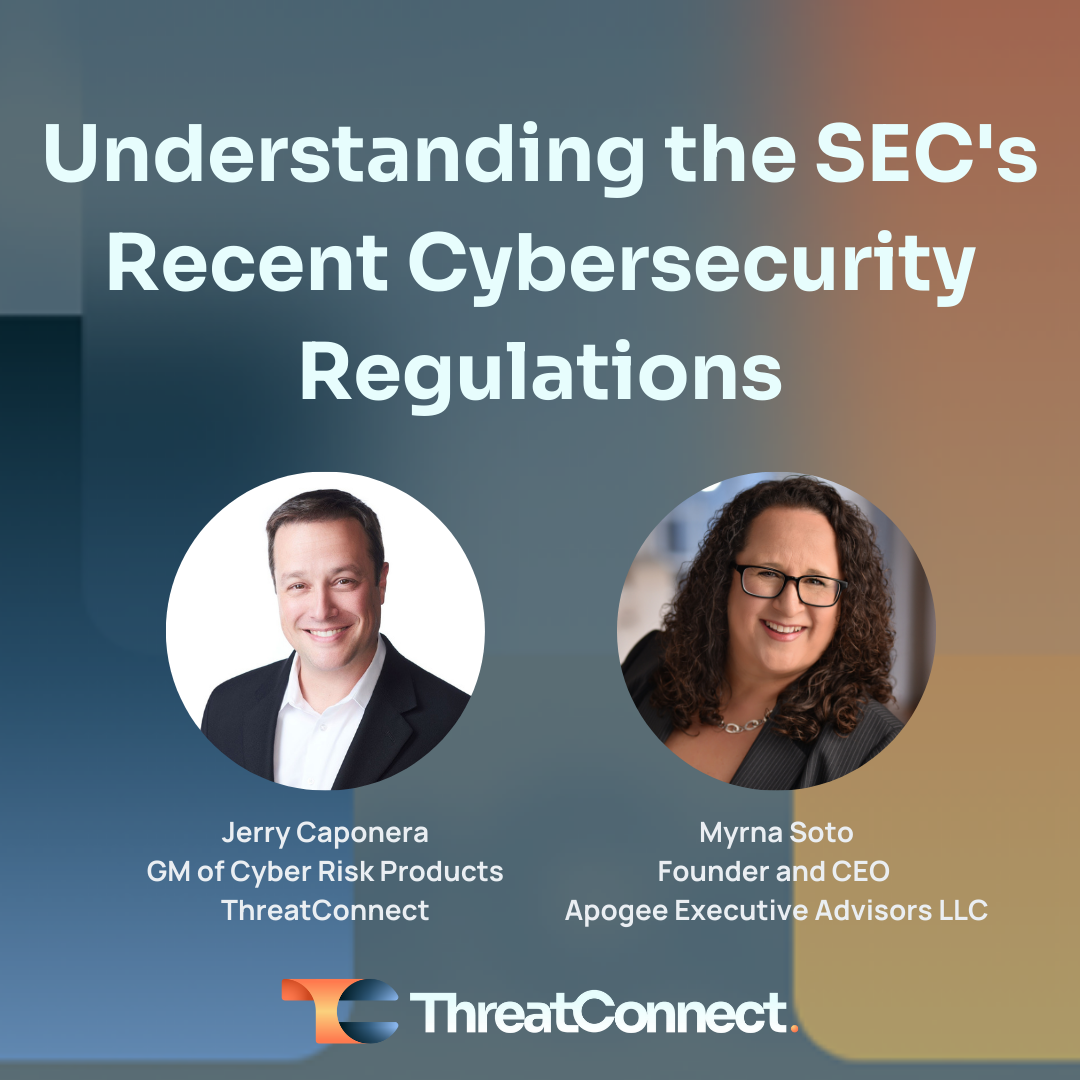Posted
In a recent webinar, Addressing the SEC Requirements for Materiality Disclosure, industry experts shed light on the intricate balance between cybersecurity management and the new regulatory requirements enforced by the Securities and Exchange Commission (SEC). They discussed the critical aspects of risk management, emphasizing the importance of quantifying cybersecurity risk and the role of executive management in fostering a robust cybersecurity posture.
Myrna Soto, Founder and CEO of Apogee Executive Advisors LLC, with a background that spans over 16 years as a CIO and now serving on the board of directors, paired with the experience of Jerry Caponera, GM of Cyber Risk Products in risk qualification and board advisement, provided attendees with a comprehensive overview of the evolving SEC requirements and effective cybersecurity strategies.
They emphasized the urgent need for organizations to pivot towards a more quantifiable approach to assessing cybersecurity risks and incident materiality. Adopting quantifiable measures that organizations can utilize internally to determine the materiality of cybersecurity incidents helps support better decision-making and more transparent disclosures.
A crucial point in this discussion is the concept of “materiality.” Businesses must proactively assess what constitutes a significant enough incident to warrant reporting under the SEC regulations. The definition of Materiality is vague, which is good because companies should be able to define it based on their business however, it’s still challenging because there is little guidance. United Healthcare recently suffered a large breach where the expected cost could exceed $1B, but in their most recent filings, they didn’t claim it was material. The ambiguity in the SEC guidelines was intentional but will most likely be updated in the future to be more specific.
These discussions provide valuable insights into the SEC’s cybersecurity regulations and their implications for companies. For example, ThreatConnect Risk Quantifier (RQ) helps manage these issues by illustrating financial exposure to attacks and quickly addressing the materiality question.
As secure investment planning emerges as a critical business factor, materiality thresholds become vital in determining which instances warrant attention. Adopting structured risk quantification constructs will aid businesses in making informed investment decisions. Companies face the continual challenge of measuring and appropriately conveying their assessment or outcomes to the board.
In conclusion, this webinar underlined the evolving landscape of cyber risk management in response to stringent SEC guidelines. While organizations may initially perceive these SEC regulations as burdensome, seeing them as beneficial guidelines will change their perspective. After all, the regulations aim to ensure transparency in managing cyber risks, promote best practices, drive investor confidence, and ultimately lead to a more secure market. Myrna and Jerry’s insights into quantifiable risk measures, internal discussion of materiality thresholds, and the value of scenario planning offer a strategic roadmap for organizations navigating these regulatory complexities. Aligning cybersecurity measures with quantifiable risk management practices not only aids in making informed security investment decisions but also fosters a stronger case in discussions with boards or during unfortunate incidents.
To get started on your cyber risk quantification journey – explore tools and frameworks that enable risk quantification and engage with leadership to ensure a shared understanding of the cybersecurity risk landscape. Organizations should examine their current security measures, consider the quantifiable impact of potential security investments, and align their cybersecurity strategy with broader business objectives.
Check out ThreatConnect Buyer’s Guide for Cyber Risk Quantification Solutions to explore the different types of CRQ solutions. From semi-quantitative measurements to AI-powered solutions, CRQ techniques continue to evolve. Discover how these approaches streamline risk assessment processes and drive effective risk mitigation strategies.
Explore ThreatConnect Risk Quantifier – designed to operationalize cyber risk quantification effortlessly. ThreatConnect RQ addresses common cyber risk management challenges and paves the way for superior decision-making and strategic planning. You can take the interactive tour here or reach out to our experts for a demo!
